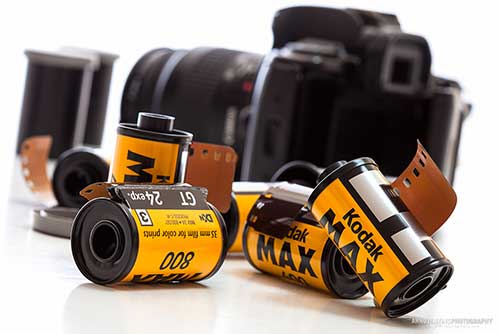Kodak dominated photography for over a century. Then in 2012 it filed for bankruptcy. Why? What happened? While it was instrumental in the invention of digital photographic technology, it failed to recognise its significance. In the late 1990s sales of photographic film declined and Kodak was slow to transition to digital photography.
The Swiss dominated watches. With the advent of electronic watches and Pulsar and LED displays the Swiss watch industry failed to recognise its significance. They targeted their research on improving mechanical watches. “The Swiss viewed quartz as a fad that would pass, reckoning erroneously that their mechanical excellence would see them survive as kings of the heap; it was poor judgement that would eventually lead to the demise of some companies.”
The church dominated spirituality. Especially in the West. Read again the above two paragraphs and find and replace “Kodak” or “Swiss” with “church”…
In the first two paragraphs they mistook means and goal (end). Kodak failed to understand that the goal was images – film was the means for the time. The Swiss failed to understand that the goal was telling time, watches – mechanical was the means for the time. Of all institutions church, surely, should be the very one that has lengthy expertise in distinguishing the means and the end, the goal.
Church needs to
- be clear what its goal is
- be clear what the current context is
- be focused in applying today’s means to our unchanged goal
It is not too late for the parable to end well:
The Swiss watch industry was moribond in the middle of the 1970s, having missed out the electronic revolution and being strongly affected by the economic crisis.
But what is the situation now, thirty years later? Having successfully completed its structural reconversion, the watch industry is today, as it was yesterday, one of the brightest stars in the Swiss economic firmament. Better still, during the last five or six years, it has taken the leading position amongst the country’s most successful industries, breaking its own records in exporting each year.




Do remind me: what’s a “watch”? I suppose it’s easy enough to return to the head of the pack when an industry becomes purely about cosmetics and not at all about doing something useful. Anyone who needs to tell the time just looks at their phone nowadays.
And, what’s with comparing the church to a business? Certainly you’re right in saying that the church needs to be clear about what the goal is, and the context, and how to apply today’s means to the unchanging goal.
But making the most profits, or having the highest turnover, or the best marketshare or the most customers, simply aren’t valid measurements of that. The question is, are the weary comforted and the confident shaken? Is the church a place for people to be transformed into human beings, both people of the world and people in the world? Is the church a place where the gospel is lived and breathed, or just a place where it’s just talked about?
The churches that make businesses out of themselves: do they do any better than the ones that don’t? Isn’t staleness a prize that’s available to everybody…
Thanks, Felix.
Your point is brilliant: what is a “watch”?! I see it as reinforcing the point of my parable.
Certainly, I am one of the first to critique the common commodification of God and the Gospel – but I am unapologetic about the value of parables following the one who used debtors, rich people, builders, pearl dealers, managers, judges, and so forth to make his point. Pressing them until they break is not my approach.
Blessings
I think the challenge lies in the folloing, “be clear what the current context is.”
We should be clear, who could disagree about that. But can we be clear? The current context is ever changing and even when freeze-framed (thanks Kodak!) for a moment, is pluriform in character.
What I applaud about the church in all its variegated hues these days is that each hue is an attempt to clarify some aspect of the context.
Some attempts are rank failures. (Sometimes seen early by perpicacious observers; sometimes eventually realised when the building – if there is one – is closed down and sold).
Some wonderful attempts look down on other underwhelming attempts without realising that their success (or ‘success’) is simply the brilliant reading of one aspect of the context (without actually offering any great insight into understanding other aspects of the context).
Speaking for my (our) own Anglican collection of attempts to clarify the context, I wonder if history will judge us a complete failure to read any aspect of the context well … or a modest success because some attempts will be judged to have lasted the distance into the future of the 21st century.
Thanks, Peter.
I’m with you on the “ever changing”. I need more convincing by you that it is so “pluriform”. I see a rather Western global village context, with a lessening of pluriformity, not an increase of it.
The danger of ticking the “ever changing” box is the reinforcement of the claim that things will “come round full circle”. Some of the context, at least in our lifetime, will not return to last-millennium’s context. IMO.
Christian history in Mediterranean North Africa is sobering…
Blessings.
Peter Senge (I think) recounts how increasing numbers of workers in the Swiss watch factories came to work with Japanese-made digital watches, but management still didn’t recognise it as the way of the future.
The story always makes me wonder what are we missing from our very own congregations?